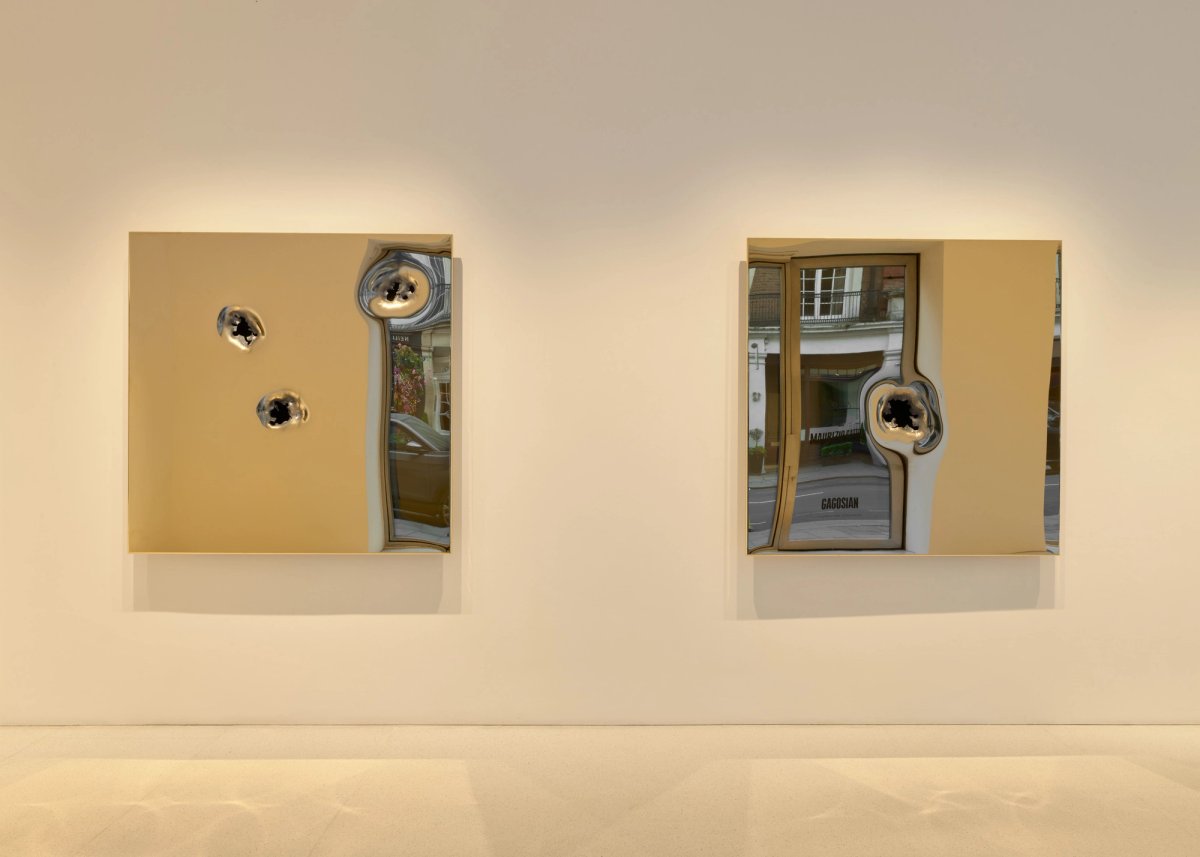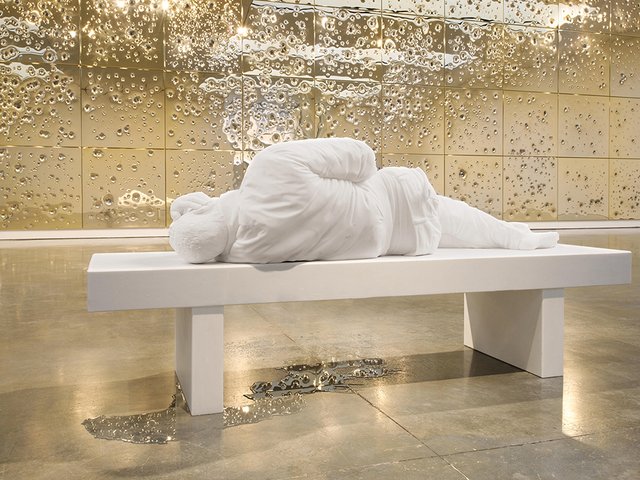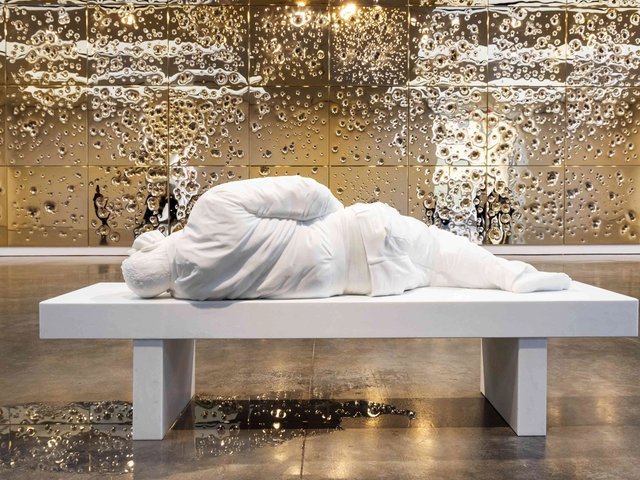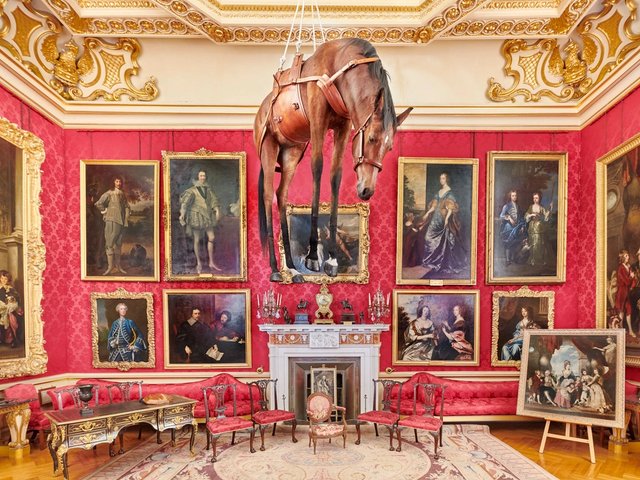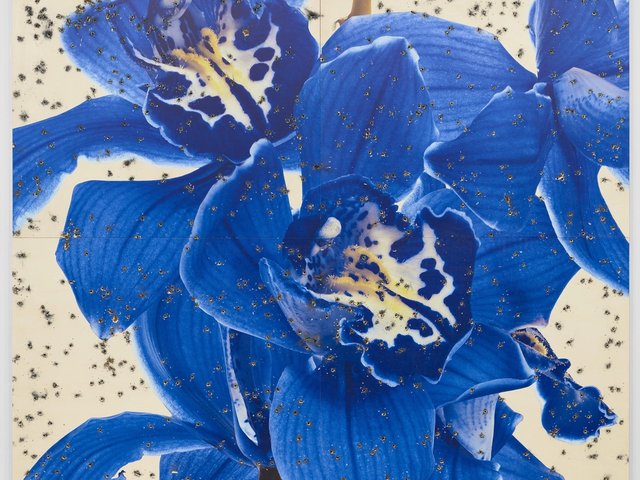Since the early 1990s, Italian artist Maurizio Cattelan has been considered one of contemporary art’s most high profile provocateurs. Now the maverick’s latest works have been unveiled at Gagosian gallery, London, in the exhibition Bones (Davies Street, until 24 May).
A series of stainless steel panels, plated in 24-carat gold, have been transformed by one or two gunshots, resulting in crater-like creations. The works recall the piece Sunday, 2024, shown at Gagosian New York in April last year, comprising 64 stainless-steel panels dotted with thousands of bullet holes.
The latest destroyed panels are shown alongside a sculpture comprising a Carrara marble boulder topped with a pair of horns, perched atop a couch (Notre Dame, 2025). A sculpture of a guitar-playing skeleton, placed inside a bottle (Deaf, 2025) is both macabre and comical.
We spoke to Cattelan about the new pieces—and why they resonate in Trump’s America.
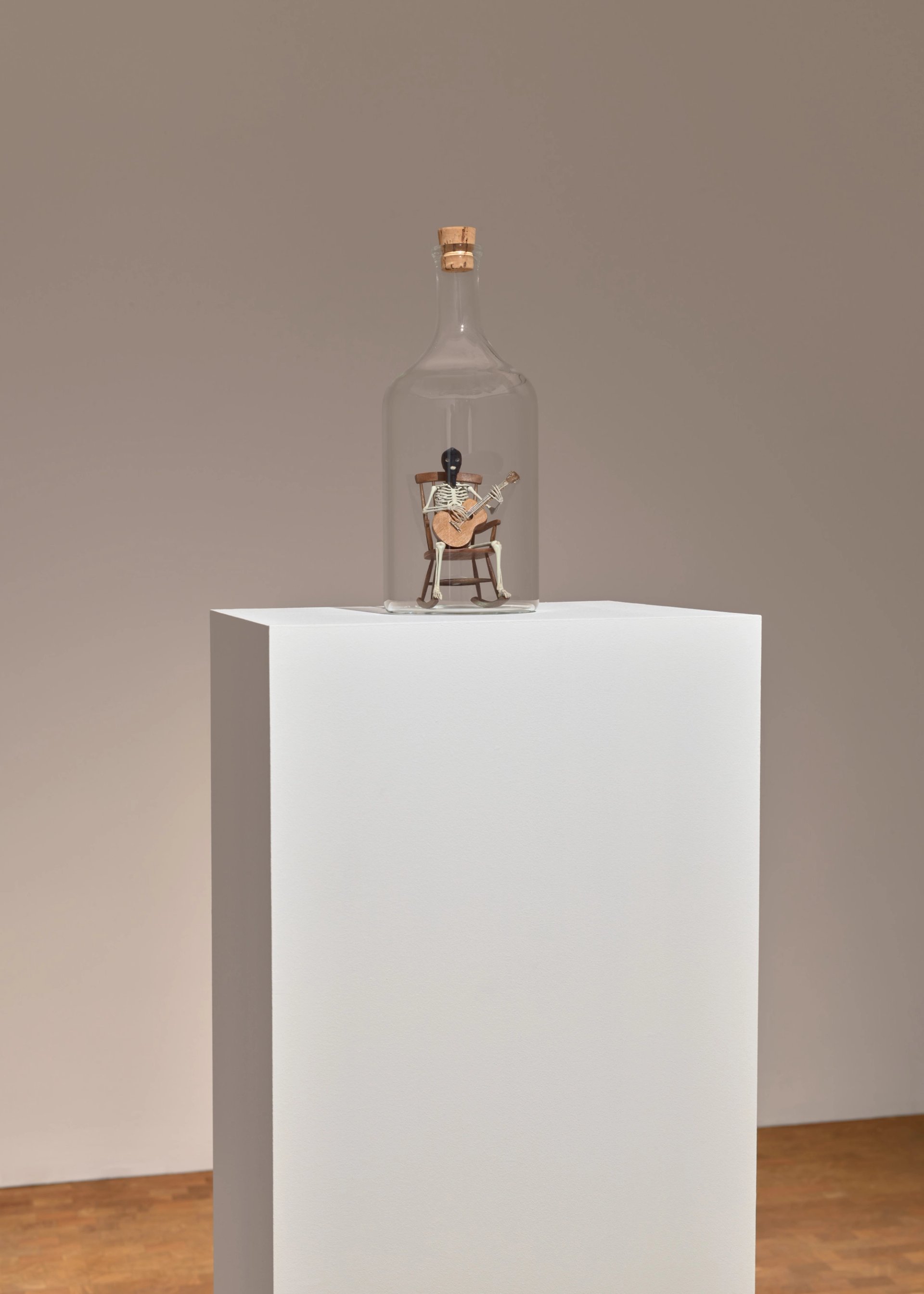
Maurizio Cattelan, Bones, 2025, installation view
Artwork © Maurizio Cattelan. Photo: Prudence Cuming Associates Ltd. Courtesy Gagosian
The Art Newspaper: Are the gold-plated gunshot panels an act of destruction or creation? Are they a symbol of violence, and nothing else?
Maurizio Cattelan: They’re what happens when destruction tries to dress up as creation—and vice versa. Every hole is a birthmark. The violence is real, but it’s also a shortcut to something else: intimacy, power, maybe even beauty. It’s not just about shooting—it is about what you choose to aim at.
Were the panels made at a gun range?
These panels were conceptualised in New York in 2024, around the exhibition Sunday. Unlike the works in Sunday, these were made in a more controlled, almost intimate setting. One weapon, a 12-gauge shotgun, one gesture, repeated. Unlike the chaos of Sunday, here the violence is focused, almost meditative. Think less action movie, more sacred ritual with gunpowder.
I saw the Sunday gunshot panels at Gagosian New York. In the context of Donald Trump’s America, should we view the new panels in a different way?
Absolutely. The noise has changed. Back then, it was chaos—bang-bang everywhere. Now it’s surgical, even ceremonial. Each shot is a punctuation mark. You could almost pray in front of them. The violence hasn’t stopped—it has just learned to behave.
Are you a fan of the late auto-destructive artist Gustav Metzger? The panels appear to reference his work.
Metzger knew how to destroy with elegance. I like that. Same with [Lucio] Fontana—he didn’t cut canvases, he opened them. Violence can be a way to see through things.
Why is the marble element of the Notre Dame (2025) sculpture placed on a sofa?
Because even myths need somewhere to sit. Notre Dame looks like it’s been dug up from a forgotten past—part relic, part ruin, part god fallen from grace. The horns give it a totemic feel, like it used to mean something sacred. Putting it on a sofa messes with the scale of history—suddenly this heavy, ancient presence is in your living room, quiet but loaded. It’s not just resting. It’s waiting.
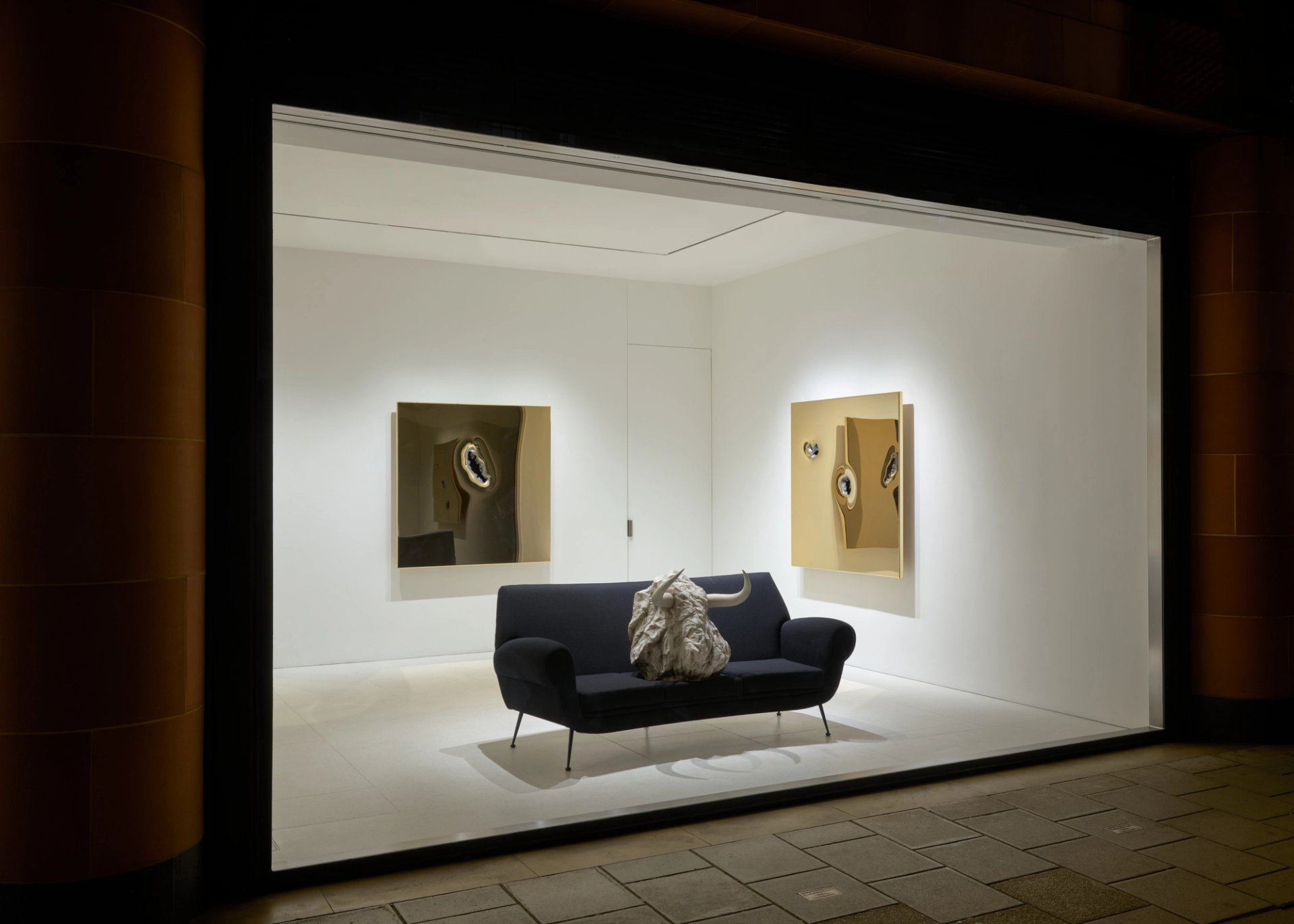
Maurizio Cattelan, Bones, 2025, installation view
Artwork © Maurizio Cattelan. Photo: Prudence Cuming Associates Ltd. Courtesy Gagosian
The work Deaf (2025) is nihilistic—should we laugh or cry?
Maybe it’s not about emotion, but recognition. Deaf could be a portrait of the afterlife—or a warning disguised as a lullaby. A masked skeleton playing to no one, rocking endlessly in a glass coffin. It’s what remains when identity becomes costume, and time is a closed loop. Not a death, but the rehearsal of one.
The works Comedian (2019)—the duct-taped banana which sold for $6.2m at auction last year—and the stolen gold toilet America (2016) continue to garner attention. Are you concerned they will overshadow your other work?
Not at all. Those works spoke directly to the public—no codes, no intermediaries—and maybe that’s why they left a mark. But every piece opens a door, sometimes to another work, sometimes to a dead end. I just hope to keep finding doors. If there’s still the urge to discover, then something else will come. Maybe not louder, but necessary.
- Bones is at Gagosian gallery, Davies Street, London, until 24 May


